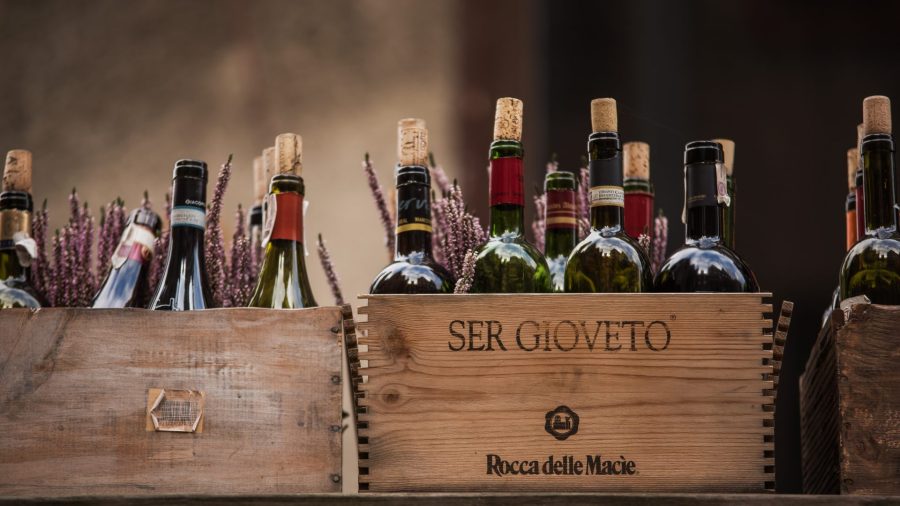Editor’s note: Part 2 of a three-part series analyzing the current state of the wine industry.
The effects of supply chain disruptions in the global food industry are well-known and easy to identify: low inventories, unavailability of certain food offerings, shipping delays, spoiled produce and more. Some might assume the wine world shouldn’t be affected heavily by such issues. After all, wines are grown, harvested, and vinified on site, and they spend months (if not years) aging in wood barrels in some cool dark basement somewhere, right?
Well, not exactly…
Only about 20% of the wines produced on a given year end up spending any meaningful amount of time in storage, be it in wood barrels, stainless steel tanks or concrete vats. The remaining 80% spend – at most – a few weeks (usually 4-6) in any sort of “holding” or “aging” vessel at the winery. Soon after fermentation and filtering, they are bottled, labeled, packaged, and shipped worldwide.
Like most global industries, wine is highly dependent on the global supply chain. In a way, it can be argued that wine suffers from two potential disruptions: one is “agricultural” and the other is “logistical.” The “agricultural” disruption has been widely understood for a long time; bad harvests, frost, hotter than normal temperatures, and excessive rain can greatly affect the ultimate product. For example, it is widely expected that French champagne will be in short supply for the next 2-3 years due to poor weather because, in April 2021, 12 nights of frost wiped out 30% of this year’s champagne crop.
However, the “logistical” disruption (bottling, shipping, and delivery), which is the one more directly linked to the global supply chain, has not really been a factor until now. On the contrary, the global supply chain has facilitated the ever more efficient distribution of wines globally and has directly contributed to greater availability, more efficiencies of scale and lower consumer prices. Even with rising wine production volumes, the supply chain has continued to work well. Increases in wine production have been largely steady and gradual over the years, so the supply chain has had ample time, room, and know-how to accommodate it.
This accommodation, however, may be significantly tested in the coming months.
I attended Wine Spectator’s annual gathering in New York recently, and supply chain disruptions were definitively an item of conversation. Anecdotally, neither producers or distributors are hitting the proverbial “panic button” just yet, but supply issues (especially with non-US winemakers) are beginning to surface. There’s general concern about availability of nonagricultural wine supplies (like glass bottles, labels, corks, and even label glue).
Also of note, most mass-market wines aren’t shipped already bottled, but rather in large bulk containers, and bottled in the country of final sale prior to distribution. So, if you are a bulk wine producer in, say, South America or Europe, the supply chain problems can disrupt the distribution of your wine at many points.
A simple analysis of the wine supply reveals at least six potential disruption points:
- distribution capacity to bring your wine to port
- availability of cargo space on large container ships (few wines are transported by air freight
- availability of ground cargo capacity to transport wine to the bottling facility
- availability of glass bottles, labels, corks etc.
- availability of workers and machinery to actually bottle the wine and
- availability of local/regional transportation capacity to bring wine to distributors.
Bottomline: the disruption risks are many, and very real.
At present, wine supply chain issues are just starting to surface. The 2021 harvest is largely over in the Northern Hemisphere, and wine vinification is just starting. For distributors, wine orders are usually placed months (if not years) in advance, so the effect on them to date – if any – has been largely logistical instead of wine inventory unavailability.
The overall consensus, however, is that supply chain issues will get progressively more challenging in the coming months and likely through 2022 and perhaps 2023. The first stress on the system may come as early as February 2022, when the distribution of the 2021 vintage begins.
Despite all the looming and potential supply chain woes, there is a bit of good news that gives wine producers and distributors some respite. Simply put, there’s a lot of wine out there, from many regions, of many varietals and from many producers. The availability of wine per se is unlikely to be severely affected, and many mass-market wine consumers may only experience occasional inconveniences if their preferred wines are temporarily unavailable.
The concern is not as much that of being able to deliver wine to consumers, but more to be able to deliver the specific wines consumers demand.
Editor’s note: Juan Ruiz is a finance and investment professional with over 30 years’ experience collecting and reviewing wines. He’s a graduate of New York’s Institute of Culinary Education’s Intensive Sommelier Program and a certified sommelier with the Court of Master Sommeliers, Americas.











